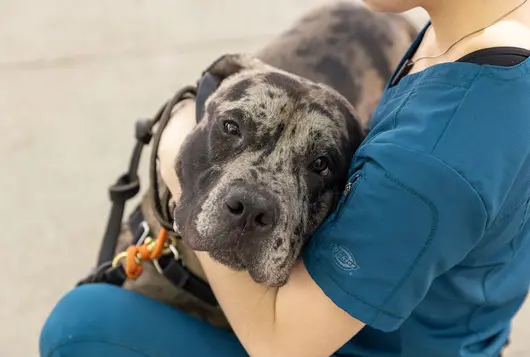The Overdose Dangers of Calcium Channel Blockers

Calcium channel blockers are used to treat hypertension or arrhythmias in veterinary patients. They are commonly used in human medicine as well, which means accidental overdoses in pets can and do occur.
Unfortunately, overdoses of calcium channel blockers can results in significant morbidity and mortality.
Mechanism of Action
Calcium channel blockers inhibit membrane transport of calcium by acting on the voltage-sensitive calcium channel during the slow inward excitation-contraction coupling phase in cardiac muscle and vascular smooth muscle.
The reduced calcium influx results in reduced AV nodal conduction and a direct depressant effect on the sinus node and reduced calcium-induced calcium release from the sarcoplasmic reticulum, leading to reduced cardiac inotropy and vascular tone (particularly in coronary and arterial smooth muscle).
Clinical Signs
Onset of clinical signs can be rapid, as quickly as 15 minutes post exposure with immediate release medications; however, signs can be delayed up to eight hours with extended release versions.
Clinical signs primarily involve the cardiovascular system including hypotension and arrhythmias (tachycardia, bradycardia, AV block), but may also include gastrointestinal upset (vomiting, diarrhea), neurologic (lethargy, ataxia, seizures) and respiratory signs (acute lung injury/non cardiogenic pulmonary edema).
In overdoses, signs may last 24-96 hours.
Laboratory findings include:
- Hyperglycemia
- Hypokalemia
- Hypophosphatemia
- Hypomagnesemia
- Acidosis (secondary to decreased tissue perfusion)
- Acute renal injury (secondary to decreased tissue perfusion)
Treating the Asymptomatic Pet
- Decontamination. Inducing emesis and activated charcoal can both be beneficial.
- Monitoring in hospital for clinical signs.
- Baseline electrolytes, glucose and biochemistry.
Monitoring the Symptomatic Pet
- Monitor for noncardiogenic pulmonary edema while giving fluids.
- Monitor central venous pressure while giving fluids, particularly in severe overdoses.
- Continuously monitor ECG and blood pressure.
- Serially monitor electrolytes.
- Monitor renal values daily.
- Monitor urine output in severe cases.
- Monitor acid base status.
Treating the Symptomatic Pet
- Provide fluids, with Sodium Chloride 0.9% preferred.
- Atropine may be used to help address bradycardia and AV block.
- Calcium gluconate or calcium chloride is given to reverse hypotension and improve cardiac conduction abnormalities.
- Pressor agents help maintain blood pressure.
- Insulin/dextrose may be beneficial in patients with severe or persistent hypotension.
- Lipid emulsion therapy should be considered in severe cases, particularly those not responding well to standard treatment measures.
- Seizures may be addressed with benzodiazepines.
- Gastric lavage may be beneficial in pets with exposure to extended release medications.
More Lifesaving Resources
How Do You Mend a Heart Broken by Lamotrigine?
Oleander: Beautiful but Deadly to Pets
We have lots more on this subject:



